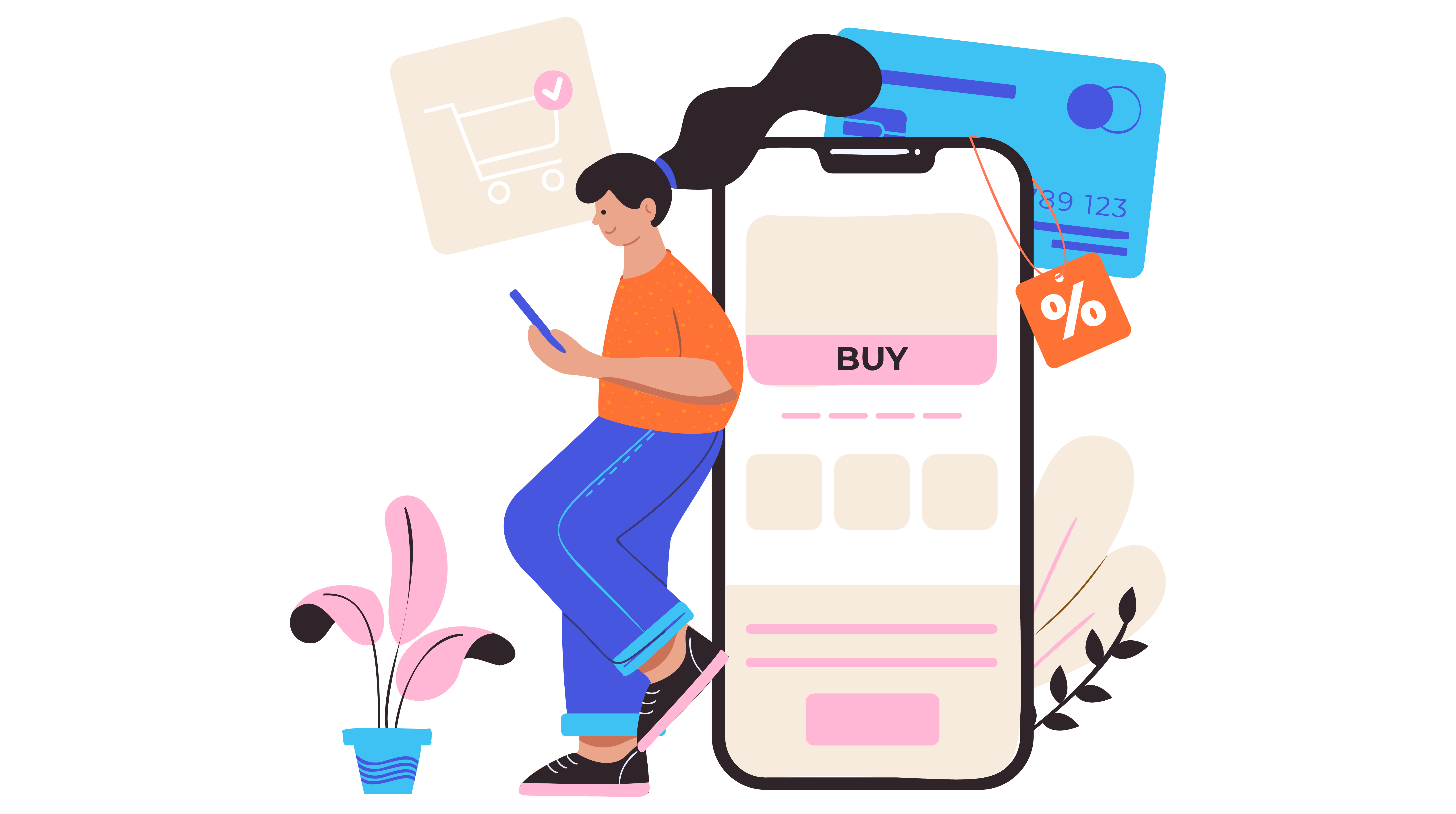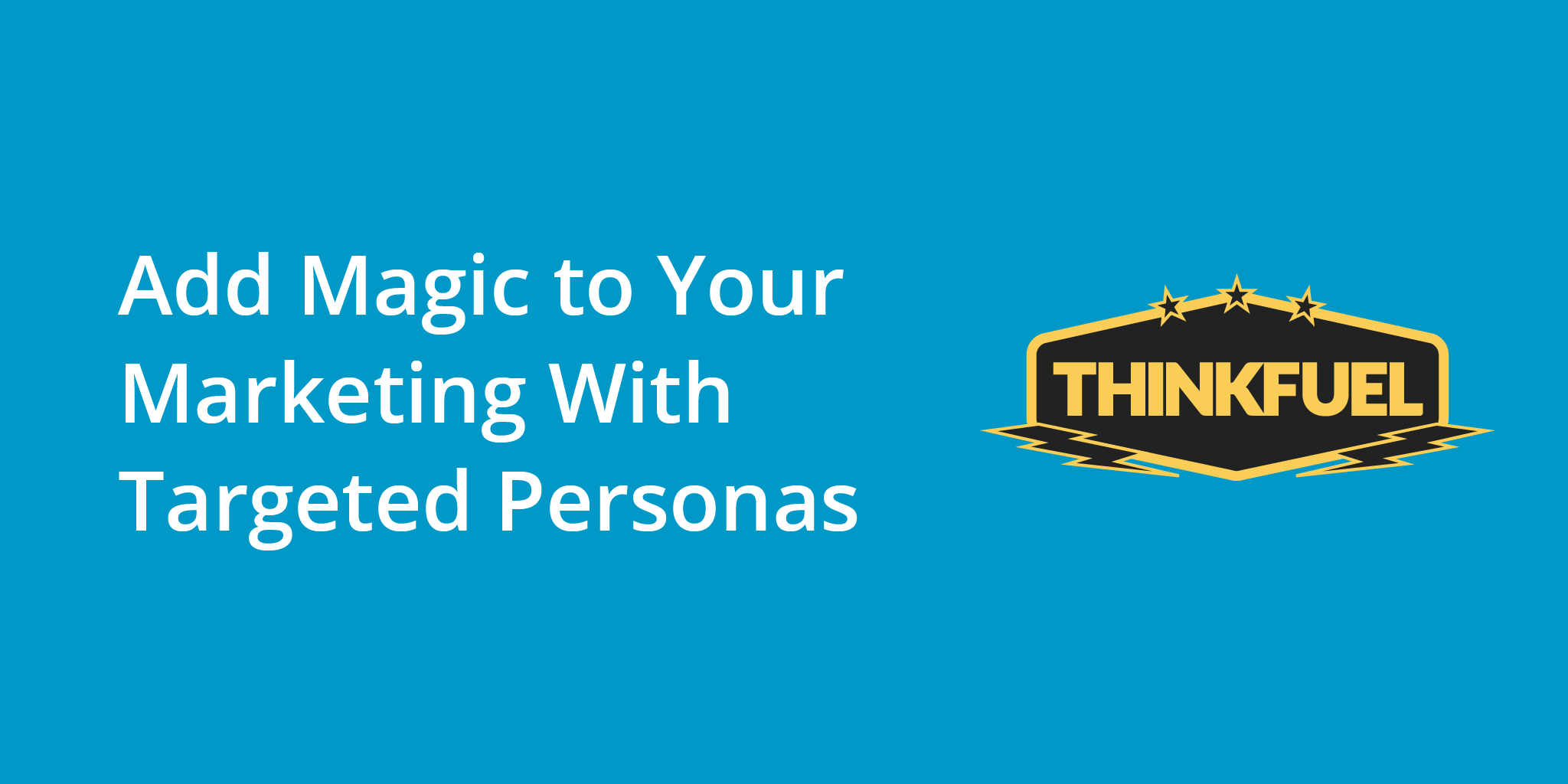Effective marketing takes finesse and precision. The days of generalized marketing are gone in favor of personalized marketing with laser focus. And there’s nothing more critical to crafting a potent marketing campaign than target market personas. Then reaching them how they like to be reached….
A marketing persona is a semi-fictional person who represents a group of people who share similar characteristics. They are based on thorough research rather than internal assumptions, validated by actual customers. Crafting personas is well worth the time and effort – they add the magic to marketing to fuel effective, personalized, and successful B2B campaigns.
Enchant Your Target Audience with Precise Personalization
Personalized, authentic, and meaningful interactions with customers and prospects demonstrate your commitment to helping them make better decisions by being responsive, respectful, and relevant. This takes developing an understanding of the dynamics of customer groups to deliver accurate personalization that drives successful marketing efforts.
Personas set the stage to reach people on a more personal level, deliver the right messages at the right time, and create products and services that precisely meet their needs. Unfortunately, many B2B companies have a reputation for poor targeting, a lack of understanding of the customer journey, and a failure to adapt their marketing based on the needs and wants of their target audience.
Personalization through developing marketing personas has myriad benefits and a profound impact on engagement and revenue. Research shows that:
- Personalization often means a 20% increase in user engagement
- 77% of B2B buyers won’t make a purchase unless content is personalized
- 83% of B2B buyers feel personalization creates a better purchasing experience
- Personalization can mean revenue growth of 40%
- 59% of B2B purchasers want a personalized buyer journey
Sadly, only 25% of B2B customers feel that companies are meeting their needs for a personalized experience. Let’s fix that.

How to Craft Comprehensive Target Market Personas
First, toss out your assumptions and biases. Assumptions can be a starting point, but it is research and analysis that will tell the real tale. You might know something about your target buyers, but do you know the details of their interests and specific needs? The typical background of your ideal customer? The most robust buyer personas are market-research-based, augmented by insights you gather from your customer base.
How many personas do you need? As many as necessary, but start small and then expand your number of personas as needed. How do you create them? The first step is to gather the information you need.
- Analyzing your current customer data can reveal trends in content consumption and how customers find it.
- Analyze market data from Google analytics and various social media platforms.
- Get sales team feedback. They are on the front lines. Each lead they interact with can provide some insight, even if they are generalizations about the different types of customers who are most satisfied with their journey.
- Interview customers and prospects. What do they like about your product or service?
- Gather demographic data such as age, job title, location, and business size.
Armed with your information and insights, the next step is to segment your buyer personas. Look for similarities in behavior, wants, and needs. Give your persona a name. You’re dealing with human beings, after all. It will also make it easier when you refer to them.
Next, develop a detailed description of each of your personas that includes demographics, pain points, motivation, and goals. Add a photo or illustration. An important thing to remember is that buyer personas are not static – they can and will change based on the validation provided by further customer surveys and feedback analysis.
Precisely Map the Journey
Now it’s time to take your target market personas and use them to facilitate the mapping of the customer journey and its various touchpoints while streamlining your communications, sales, and follow-ups with tools like Kixie and HubSpot. You’ll create a customer journey map for each persona that describes their experience at different touchpoints. Effective mapping is based on research and verified behavior to reflect the true experience, whether it is good or bad.
Most of the information you need to create your journey maps come from your personas, which is why great care should be taken to create the most effective personas possible. A journey map includes
- Interaction context. Where are interactions taking place? That could be on your website, the phone, a mobile app, or social media. It is important to meet your customers where they are. How does the context influence how they interact and what they want to do?
- Journey progression. Steps in the customer journey are interdependent. Examine how each step enables the next.
- How do we communicate? Setting up automation and streamlining tools for your sales team will help them speak to these leads during their journey, setting up your sales team for success. Sending emails is a great way to reach your customers, but often it’s not enough, and we need to find ways to optimize the sales process by calling and texting.
Using tools like Kixie & HubSpot that automatically log calls and texts and have the ability to automate everything from appointment reminders to missed call text message follow-ups. It is crucial to understand the customer journey and provide multiple ways they can be reached.
- Emotions. When you analyze the journey, it’s essential to know how the customer feels at each step. Do they view a product page, or do they leave rather than click the buy button or a link for more information or contact? Do they abandon their shopping cart at some step? These actions, or lack thereof, can indicate boredom, frustration, or the engagement you want.

A Real-life Example
Journey mapping means a better customer experience when done right, so let’s look at an example of successful journey mapping.
Moov Technologies needed a customer journey map to help outreach efforts and improve sales. The sales and product teams worked together to develop targeted survey questions for their client base. From that, they are able to precisely determine journey pain points, including the customer type and region.
Mapping the journey revealed a low score in the handoff between sales and customer success in Asia. This resulted in beefing up the customer service team in Taiwan to offer customer service 24/7, and since then, they have had no issues in the region.
Exploring Psychological Triggers
Most purchases are emotional decisions, no matter the industry. By understanding the motivation, pain points, and aspirations of your personas, you can improve their accuracy and relevance. This understanding enables psychological targeting: different personality types can help craft compelling marketing messages that match communication styles. It offers the “why.”
Psychological targeting can add a new dimension to your personas to enable rich, personalized customer journeys that convert. When attracting new customers, you can’t completely rely on past behaviors, so personality can be used to infer purchasing preferences.
This type of targeting also answers the “how” question of communicating value by informing the “why.” This leads to a holistic customer experience with the appropriate journey.
Persona-Driven Content Drives Conversions
When you leverage personas throughout the content creation process, you produce content that directly speaks to your target audience, creates brand loyalty, and drives engagement that leads to conversions.
However, content format, tones, and distribution channels must all be tailored to align with the preferences of your personas:
- Do your research to create effective personas.
- Identify specific content-related information, including jargon preferences, tone of voice, and types of content your personas prefer.
- Meet your personas where they are. Do they prefer email, social media, calling, or reading blogs?
Precise B2B targeting allows for a hyper-focus on individual personas, so they can be targeted with hyper-relative ads that excite, engage, and convert. You’ll reach out to people on the personal level they prefer, breaking through the noise created by your competition to offer them exactly what they want, when and where they want it.
The Future of Personas and Personalization
The future is available now to create precise personas. Artificial intelligence (AI) is transforming the customer experience and allowing for the creation of precise personas. Machine learning and AI can be used to analyze customer data to understand preferences and needs so accurate personas and tailored experiences can be created.
AI-powered personalization leads to an improved customer experience, reduced churn by fostering customer loyalty, increased revenue, and the data-driven insights you need. Speaking of insights, predictive analytics are another tool for persona creation and refinement.
Predictive analytics uses a combination of statistics, data mining, and machine learning (ML) to discover meaning in data to reveal previously unavailable insights. It takes crafting customer personas to the next level by uncovering buying signals, patterns, and traits indicating, for example, when someone is likely to buy or identifying traits of customers with the highest revenue potential.
Want to stay ahead of the marketing curve? Invest in the latest tools and technology, keep up-to-date on industry news, continuously research, ask your customers for feedback, and experiment.
Market strategies driven by target marketing personas have the power to transform your marketing efforts by developing deeper audience connections, amplifying conversions, and cultivating enduring brand loyalty. There’s a real opportunity here to capture those 75% of B2B customers who aren’t getting the personalized experience they want. Don’t let it pass you by; understand better how your customers want to be reached. To automatically log calls and texts, with the ability to automate everything from appointment reminders to missed call text message follow ups, ThinkFuel loves the Kixie integration with HubSpot – The first step, though, is understanding your target. Reach out to us today for a personalized consultation.
About the Author
Earning an exceptional 98% 5-star rating from satisfied clients, ThinkFuel prides themselves on crafting growth marketing plans tailored to specific objectives. These strategic plans are presented with unwavering transparency, ensuring clients are always well informed about the allocation of their investments.
ThinkFuels success lies in forging deep partnerships between clients, wherein the agency seamlessly integrates with clients’ sales and marketing teams. By delivering agile and personalized inbound sales and marketing programs, ThinkFuel propels businesses toward their lead generation targets, revenue objectives, and ROI ambitions.



